 Dishonesty has a limited shelf life.
Dishonesty has a limited shelf life.
According to a recent study from the American Academy of Matrimonial Lawyers, eighty percent of divorce lawyers have reported a spike in the number of cases that use social media for evidence of cheating:
“Flirty messages and photographs found on Facebook are increasingly being cited as proof of unreasonable behavior or irreconcilable differences.”
Unfortunately, the study forgot to mention one thing:
This problem isn’t the computer – the problem is the character of the person using it.
People don’t get divorced because of Facebook – they get divorced because dishonesty is written all over their face. Employees don’t get fired for blogging – they get fired for being stupid. And organizational leaders don’t go to jail because some intern squealed – they go to jail because they’re morally bankrupt cracker-honkeys. THE REALITY IS: If you choose to live a dishonest life offline – there’s going to be a huge echo online. And your digital footprint will slip on the technological banana peel and destroy the things that matter most in your life.
How are you branding your honesty?
That’s the key question.
Because I’m not saying you need to get naked – I’m saying you already are naked, and if you don’t consider the implications of your truth, you lose.
Here’s a list of strategies to help you undress for success:
1. Offer unprecedented access to information. Privacy is so last century. Even if you don’t lay your cards out on the table. People are still going to learn what they need to know about you on their own. May as show ‘em your goods.
Besides, opacity breeds mistrust. Just ask blogger and online marketing Chris Brogan. On the bio page of his website, there’s a disclosure list of every single relationship he maintains: Affiliations, partnerships, board positions, advertising commitments and product endorsements.
His clients love this. Hell, his non-clients love this. And people all around the web are talking about Brogan’s informational undressing. My question is: When was the last time somebody blogged about your contact page?
Lesson learned: Be unusually honest, radically transparent and highly respectful to the organizations and individuals with which you connect. Prove to people that to live the brand is to leave no doubt in their minds about whom, what and why and you. How could you magnify what you can’t hide anyway?
2. Be uncompromisingly public with your thoughts. While blogging is not the answer for everyone, it’s still the smartest strategy for making your organization more approachable and transparent.
The cool part about blogging is: It’s directly related to profit. But only if you recognize both the intentionals and incidentals of the medium. For example: If your intention is to share your thinking – incidentally, you will become a better thinker. If your intention is to educate and build community with the people who matter most – incidentally, you will earn more loyalty.
Interestingly, HubSpot recently conducted a fascinating study on online marketing. They looked at data from fifteen hundred customers, mostly small and mid-sized businesses. According to their results, companies that blog have three advantages over those who don’t.
First, blogging companies have fifty-five percent more visitors – which means more people to convert.
Second, blogging companies have ninety-seven percent more inbounds links – which signals authority to search engines.
Third, blogging companies have four hundred and thirty-four percent more indexed pages – which boosts findability with search engines. What’s your excuse for not blogging yet?
Look: Statistics might lie – but Google doesn’t. The intentional commitment to make your organization more approachable results in the incidental consequence of greater profits. As long as you’re willing to go public with your thoughts. What did you write today?
3. Take it one step further. Twenty years ago, Progressive made insurance history: They started giving their customers access to the competition by offering comparison quotes from other providers. Brilliant.
Three years ago, General Motors made automotive history: They started asking Saturn dealers to provide one or more of the competing models in the showroom. That way, customers could look at it, sit in it, drive it and realize how much better it was that the other guys. Genius.
And last year, Patagonia made green history: They launched The Footprint Chronicles. It’s an interactive mini-site that allows customers to track the impact of five Patagonia products from design to delivery. Awesome.
I wonder what step your organization could take to knock the socks of the untrusting masses. And it’s not like it has to be a big step. All you have to do is quit something average. All you have to do is make the mundane memorable. All you have to do is turn rare into remarkable. Get gutsy or get gone. Are you allowing people to examine your organization’s life habits?
4. Befriend the current. Every organization has customers. Whether you call them users, clients, volunteers, members, or employees – you’re still serving somebody. And the reality is: They already know everything about you. They’re already stalking you. And they’re already sharing private, internal information to their friends and family.
Why not surf that wave? Why not leverage the trend by turning customers into partners? Consider creating an internal system to welcome complaints – and solicit solutions – from the people you serve. Burn your suggestion box. Replace it with a question box.
By remaining steadfast in your willingness to learn where you suck; your organization will only grow stronger. And instead of swimming against the current – at the risk of alienating the people who matter most – you respect the waters. You identify the unavoidable, unstoppable swell. And you allow the current to carry you where the market is going.
That way, you can spend less time swimming and more time listening. Gnarly dude. What are you pretending not to know?
5. Know when the cost of disclosure is too high. Like anything, transparency requires balance. And you don’t want to become a victim of your own approachability. Take it from a guy who’s been wearing a nametag twenty-four seven for over a decade: Personal privacy – what’s left of it, that is – is a beautiful thing.
And while I believe that anonymity is bankruptcy; I also believe that boundaries are saviors. Don’t be so transparent that you lose the magic. After all, that’s part of why people do business with you: Because you intrigue the hell out of them. And if you’re too transparent, you run the risk of disappearing completely.
You have to maintain some level of mystique. Otherwise your ability to fascinate will evaporate. The challenge is figuring out where you draw you line. Remember: If you don’t set boundaries for yourself – other people will set them for you. And then they will violate them. And then they will tell all their little friends that it’s okay to do the same. All because you never set a precedent of no. Will your transparency degrade into invisibility?
ULTIMATELY: It’s only a matter of time.
Everything matters, everybody’s watching and everything’s a performance.
That’s the reality of the marketplace: Your audience is everywhere, and they’re growing more powerful by the day. Never underestimate them.
Because sooner or later, as Seth Godin says, they’re going to see the effects of your actions. And living as if this is certain makes it far more likely that you’ll find a happy ending.
A helpful question to reinforce this principle is: “Do I want to become known for what I’m about to do?”
Try posting that on your office wall.
Try asking that before your next holiday party.
Because if you run around expecting not to get caught, eventually, the world is going to bust you.
REMEMBER: The past always reincarnates in one of two forms – either to pat you on the back or kick you in the ass.
Look – you’re already naked anyway.
May as well look good.
LET ME ASK YA THIS…
How will you organization leverage transparency?
LET ME SUGGEST THIS…
For the list called, “6 Ways to Out Position Your Competitors,” send an email to me, and you win the list for free!
* * * *
Scott Ginsberg
That Guy with the Nametag
Author, Speaker, Entrepreneur, Mentor
[email protected]
 The world’s FIRST two-in-one, flip-flop book!
The world’s FIRST two-in-one, flip-flop book!
Buy Scott’s comprehensive marketing guidebook on Amazon.com and learn how to GET noticed, GET remembered and GET business!

 Rice paper amazes me.
Rice paper amazes me.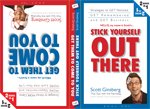 The world’s FIRST two-in-one, flip-flop book!
The world’s FIRST two-in-one, flip-flop book! A few weeks ago we talked about
A few weeks ago we talked about 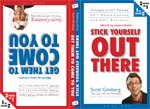 The world’s FIRST two-in-one, flip-flop book!
The world’s FIRST two-in-one, flip-flop book! The evidence is overwhelming:
The evidence is overwhelming: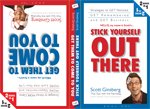 The world’s FIRST two-in-one, flip-flop book!
The world’s FIRST two-in-one, flip-flop book! Last week I wrote a post called,
Last week I wrote a post called,  The world’s FIRST two-in-one, flip-flop book!
The world’s FIRST two-in-one, flip-flop book! Did you know that most “close door” buttons on elevators don’t work?
Did you know that most “close door” buttons on elevators don’t work?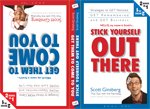 The world’s FIRST two-in-one, flip-flop book!
The world’s FIRST two-in-one, flip-flop book! You never know when your brand will need to rise to the occasion.
You never know when your brand will need to rise to the occasion.  The world’s FIRST two-in-one, flip-flop book!
The world’s FIRST two-in-one, flip-flop book! “Ideas are free; execution is priceless.”
“Ideas are free; execution is priceless.”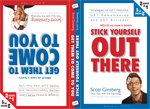 The world’s FIRST two-in-one, flip-flop book!
The world’s FIRST two-in-one, flip-flop book! “I am large. I contain multitudes.”
“I am large. I contain multitudes.”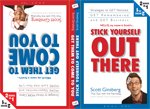 The world’s FIRST two-in-one, flip-flop book!
The world’s FIRST two-in-one, flip-flop book! Know your customer.
Know your customer. The world’s FIRST two-in-one, flip-flop book!
The world’s FIRST two-in-one, flip-flop book!